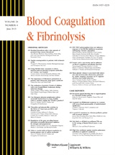
BLOOD COAGULATION & FIBRINOLYSIS
Scope & Guideline
Unraveling the Complexities of Coagulation
Introduction
Aims and Scopes
- Coagulation Disorders and Thrombosis:
The journal covers various aspects of coagulation disorders, including inherited and acquired thrombophilias, immune thrombocytopenic purpura, and other thrombotic conditions, focusing on their pathophysiology, diagnosis, and management. - Clinical Outcomes and Treatment Strategies:
Research published in the journal often explores clinical outcomes associated with different treatment modalities, including novel therapies for hemophilia, anticoagulation strategies, and the effectiveness of new drugs. - Laboratory Diagnostics and Methodologies:
A significant part of the journal is dedicated to advancements in laboratory diagnostics, including the evaluation of coagulation assays, thromboelastometry, and the development of new diagnostic techniques for bleeding disorders. - Genetic and Molecular Studies:
The journal also emphasizes genetic studies related to coagulation factors and their mutations, providing insights into the molecular basis of bleeding disorders and potential therapeutic targets. - Epidemiological Studies:
Epidemiological research focusing on the prevalence, risk factors, and socio-economic impact of coagulation disorders is a key area of interest, contributing to the understanding of these conditions at a population level.
Trending and Emerging
- Impact of COVID-19 on Coagulation:
Research investigating the effects of COVID-19 on coagulation and thrombotic risk has surged, reflecting the pandemic's significant impact on health and its implications for patients with pre-existing coagulation disorders. - Innovative Therapies and Treatments:
There is an increasing number of studies focusing on innovative therapies for treating thrombotic and bleeding disorders, including targeted therapies and novel agents like caplacizumab and emicizumab. - Real-World Evidence and Outcomes Research:
The journal is increasingly publishing studies that provide real-world evidence regarding treatment outcomes, emphasizing the importance of clinical effectiveness data in everyday practice. - Integration of Genetic Testing in Management:
Emerging themes include the integration of genetic testing into the management of coagulation disorders, highlighting the growing importance of personalized medicine in this field. - Interdisciplinary Approaches to Hemostasis:
There is a trend towards interdisciplinary research that incorporates insights from immunology, oncology, and infectious diseases, reflecting the complex interactions between coagulation and other bodily systems.
Declining or Waning
- Traditional Anticoagulation Therapies:
There has been a noticeable decrease in studies solely focused on traditional anticoagulation therapies such as warfarin, as newer direct oral anticoagulants gain prominence and become the focus of research. - Case Reports of Rare Disorders:
The frequency of case reports detailing rare coagulation disorders seems to be waning, possibly due to a shift towards more comprehensive studies that aggregate data across multiple cases rather than focusing on singular instances. - Basic Science Studies:
Basic science studies that explore fundamental mechanisms of coagulation without direct clinical applications are appearing less frequently, as the journal pivots towards research with immediate clinical relevance. - Historical Perspectives on Coagulation Disorders:
There is a decline in publications that address historical perspectives or traditional views on coagulation disorders, indicating a shift towards contemporary and evidence-based practices.
Similar Journals
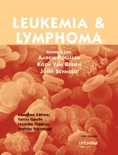
LEUKEMIA & LYMPHOMA
Advancing knowledge in blood cancer research.LEUKEMIA & LYMPHOMA is a prestigious peer-reviewed journal published by Taylor & Francis Ltd, focusing on vital research in the fields of hematology, oncology, and cancer research. With an ISSN of 1042-8194 and an E-ISSN of 1029-2403, this journal is recognized for its high-quality and impactful contributions to understanding blood cancers, with a notable impact factor reflective of its influence. Since its inception in 1989, LEUKEMIA & LYMPHOMA has continuously provided a platform for researchers and professionals to disseminate their findings, fostering advancements in diagnostic, therapeutic, and clinical strategies related to leukemias and lymphomas. The journal ranks in the Q2 category for both Hematology and Oncology research categories as of 2023, underscoring its commitment to excellence. The journal is based in the United Kingdom and serves a global audience, making it an essential resource for those dedicated to improving outcomes for patients with hematological malignancies.
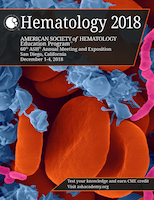
Hematology-American Society of Hematology Education Program
Bridging Research and Practice in HematologyHematology-American Society of Hematology Education Program is a premier peer-reviewed journal dedicated to advancing the field of hematology through comprehensive educational content. Published by the American Society of Hematology, this journal plays a crucial role in disseminating knowledge to researchers, clinicians, and students in hematology and related disciplines. With an impressive Q1 status in the field, it ranks among the top journals at the forefront of hematological research, as evidenced by its 60th percentile ranking in Scopus' Medicine - Hematology category. Although it does not offer open access, the journal provides invaluable insights and educational resources from leading experts, focusing on the latest advancements, treatment protocols, and evolving understanding of blood disorders. Covering a wide range of topics, from basic research to clinical applications, this journal is essential for anyone seeking to deepen their expertise and stay informed on the latest developments in hematology. For further engagement, readers can access insightful articles published since 2001, ensuring a rich repository of knowledge for ongoing research and clinical excellence.
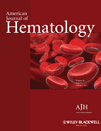
AMERICAN JOURNAL OF HEMATOLOGY
Empowering Discoveries in Blood DisordersAmerican Journal of Hematology, published by Wiley, stands as a premier outlet for the dissemination of cutting-edge research in the field of hematology. With a commendable impact factor and ranked #9 out of 137 in the Scopus medicine category, this journal has established a robust presence since its inception in 1976. Operating in the Q1 quartile for hematology, it serves as a crucial resource for researchers, clinicians, and students dedicated to understanding blood disorders and advancing treatment methodologies. While the journal does not currently offer open access options, it remains highly regarded for its rigorous peer-review process and impactful contributions to the scientific community. With coverage extending into 2024, the American Journal of Hematology is committed to fostering innovation and collaboration within the hematological sciences.

Research and Practice in Thrombosis and Haemostasis
Innovating hematology through open-access insights.Research and Practice in Thrombosis and Haemostasis, published by Elsevier, is a prominent open-access journal dedicated to advancing the field of hematology through high-quality research and clinical practice. Since its inception in 2017, this journal has established itself as a vital resource for researchers, healthcare professionals, and students interested in thrombosis and hemorrhage management, showcasing original research, reviews, and clinical studies. The journal’s commitment to accessible knowledge is reflected in its open-access model, allowing researchers worldwide to share their findings without financial barriers. With an impressive 2023 Scopus rank of #42 out of 137 in the hematology category and a respectable Q2 classification, it provides an authoritative platform for innovative ideas and cutting-edge developments in the field. As the journal continues to grow in stature, it aims to foster collaboration and knowledge exchange amongst professionals dedicated to improving patient outcomes in thrombosis and hemostasis.
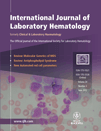
International Journal of Laboratory Hematology
Advancing the science of hematology through innovative research.The International Journal of Laboratory Hematology, published by WILEY, serves as a vital resource in the field of hematology, delivering high-quality research findings and innovations within laboratory practices since its inception in 2007. This journal, accessible under Open Access options, showcases cutting-edge studies that span critical aspects of biochemistry and clinical laboratory methodologies. With a notable impact factor reflected in its Q2 and Q3 rankings across various categories—such as Biochemistry (medical) and Hematology—this journal stands out within the Scopus rankings, positioning itself within the 60th and 59th percentiles of its respective fields. Situated in the United Kingdom, the journal's objectives lie in disseminating pivotal research that enhances our understanding of hematological disorders and laboratory techniques, making it an essential tool for researchers, professionals, and students alike who are committed to advancing the science of laboratory hematology and its applications.
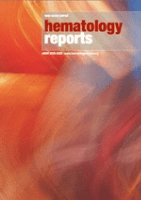
Hematology Reports
Advancing knowledge in blood disorders.Hematology Reports is an esteemed academic journal in the field of hematology, dedicated to advancing the understanding of blood disorders and their treatment. Published by MDPI, a leading Swiss publisher known for its commitment to open access since 2009, this journal provides a valuable platform for researchers and healthcare professionals to disseminate innovative findings and foster collaboration within the academic community. The journal features an array of articles ranging from clinical studies to laboratory research, and is indexed in Scopus, where it currently holds a rank of 113 out of 137 in the Medicine - Hematology category, placing it in the 17th percentile. As an open-access journal, Hematology Reports ensures that critical research is accessible to a global audience, supporting the dissemination of knowledge that has the potential to improve patient outcomes. This journal is an essential resource for those engaged in the study and treatment of hematological conditions, encouraging dialogue and the exchange of ideas to enhance clinical practices.
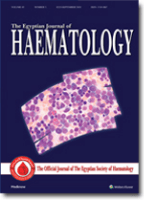
Egyptian Journal of Haematology
Connecting Scholars to Transform Hematology PracticeThe Egyptian Journal of Haematology, published by WOLTERS KLUWER MEDKNOW PUBLICATIONS, stands as a pivotal resource in the field of hematology, particularly within the context of Egypt and the broader Middle Eastern region. This journal is dedicated to disseminating high-quality research that explores the latest advancements in blood disorders, hematologic malignancies, and transfusion medicine. With a focus on original research, case studies, and reviews, it aims to provide a comprehensive platform for hematologists, researchers, and healthcare professionals to enhance their understanding and management of hematological conditions. Although it is not an open-access journal, the rigorous peer-review process ensures that only the most impactful studies are published, contributing to the journal's reputation in the academic community. The Egyptian Journal of Haematology serves as an essential tool for advancing knowledge, improving clinical outcomes, and fostering collaboration among experts in the field.

Iraqi Journal of Hematology
Elevating Knowledge, Elevating CareIraqi Journal of Hematology is a prominent peer-reviewed open-access journal dedicated to advancing the field of hematology. Published by Wolters Kluwer Medknow Publications, this journal provides a platform for researchers, professionals, and students to share cutting-edge findings and developments in various aspects of hematology, including blood diseases, diagnostics, and innovative treatments. Since its transition to open access in 2016, the journal has significantly increased its reach, allowing for wider dissemination of critical research to a global audience. With an ISSN of 2072-8069 and an E-ISSN of 2543-2702, the Iraqi Journal of Hematology strives to adhere to the highest scholarly standards and plays a vital role in the ongoing discourse in hematological research. Researchers are encouraged to contribute to this essential resource for the scientific community, contributing to the advancement of knowledge that ultimately improves patient care and treatment outcomes.
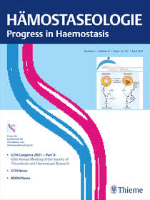
Hamostaseologie
Decoding Hemostasis: Your Source for Cutting-Edge Research and ReviewsHamostaseologie is a prominent academic journal dedicated to the field of hematology, published by GEORG THIEME VERLAG KG. With an ISSN of 0720-9355 and an E-ISSN of 2567-5761, this journal has been at the forefront of critical research and advancements since its inception in 1981, and it continues to maintain its relevance in the scientific community with a converged publication until 2024. Ranked in the Q3 quartile in Hematology for 2023, and positioned at #44 out of 137 in the Scopus Medicine Hematology category, it represents a substantial contribution to scholarly discourse. Researchers and professionals alike will find valuable insights within its pages, as it disseminates rigorous studies and reviews that address pertinent issues related to hemostasis and coagulation. While the journal does not currently offer Open Access, readers can access its valuable content through institutional subscriptions, making it an essential resource for students, clinicians, and researchers aiming to deepen their understanding of hematological science.
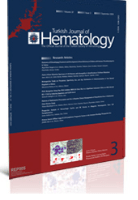
Turkish Journal of Hematology
Innovating knowledge in the field of hematology since 1999.Turkish Journal of Hematology is an esteemed publication dedicated to advancing the field of hematology, producing influential research since its inception in 1999 under the auspices of GALENOS PUBL HOUSE. With an Open Access model, it facilitates widespread dissemination of knowledge, allowing researchers, clinicians, and students to stay abreast of the latest developments in blood disorders and treatments. With an ISSN of 1300-7777 and an E-ISSN of 1308-5263, the journal holds a commendable position in the academic community, evidenced by its 2023 Q3 ranking within the hematology category and its standing at #80 out of 137 in the Scopus database, placing it in the 41st percentile. Covering a wide scope of topics within hematology, this journal serves as a critical resource for disseminating innovative research and clinical practices pertinent to the ongoing challenges faced in this vital area of medicine. With its continuous publication until 2024, Turkish Journal of Hematology remains a beacon for enhancing the understanding and treatment of hematological conditions within the Turkish and global medical communities.